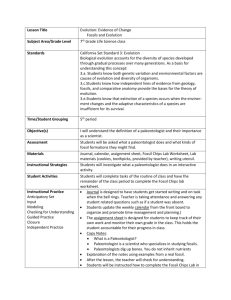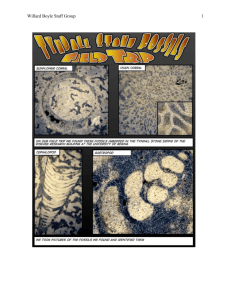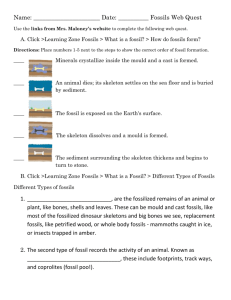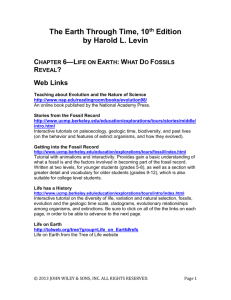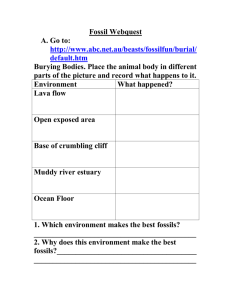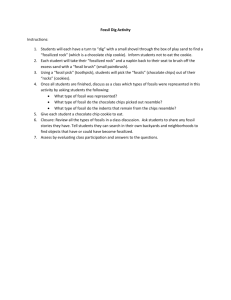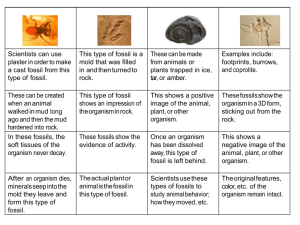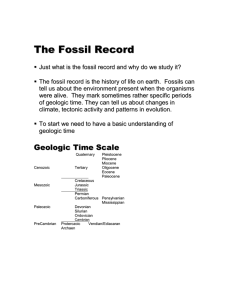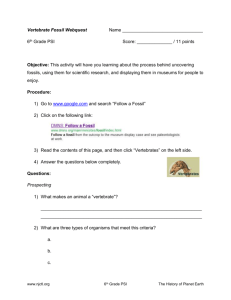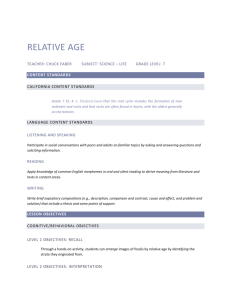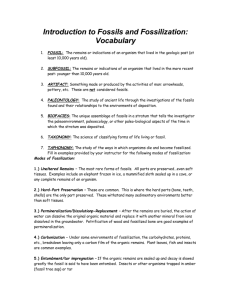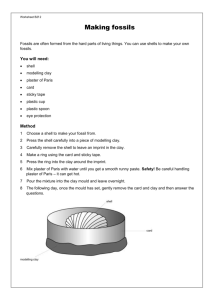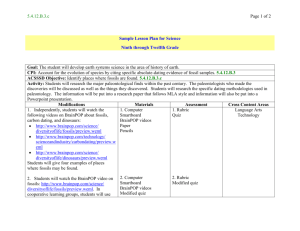Where the Hippos Roam
advertisement
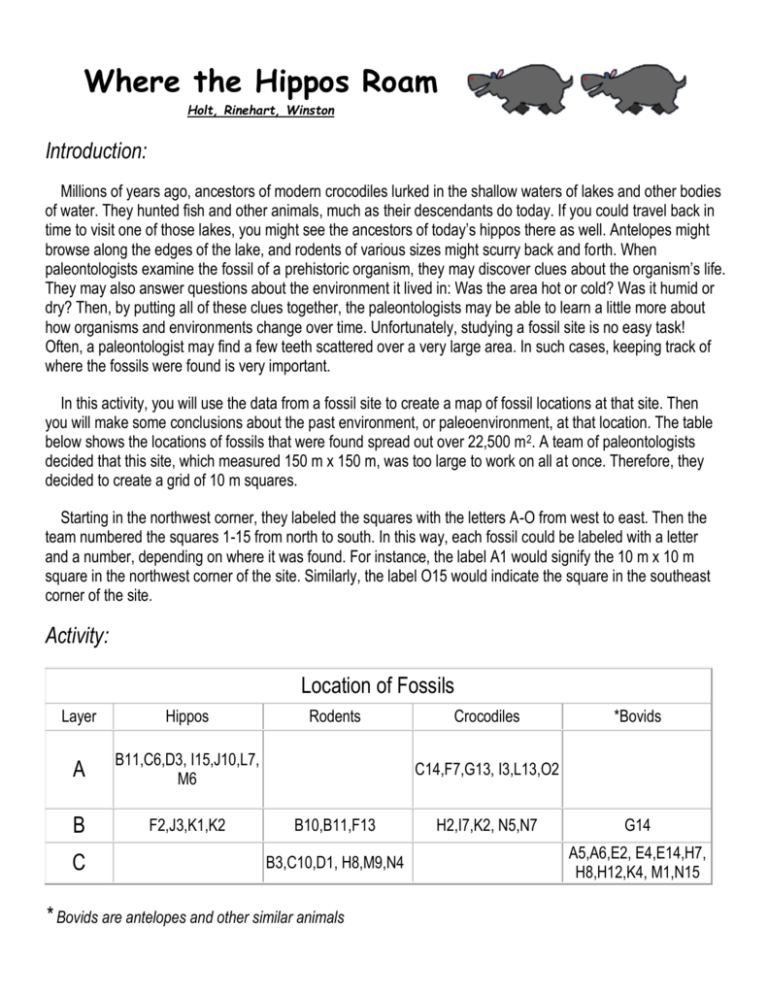
Where the Hippos Roam Holt, Rinehart, Winston Introduction: Millions of years ago, ancestors of modern crocodiles lurked in the shallow waters of lakes and other bodies of water. They hunted fish and other animals, much as their descendants do today. If you could travel back in time to visit one of those lakes, you might see the ancestors of today’s hippos there as well. Antelopes might browse along the edges of the lake, and rodents of various sizes might scurry back and forth. When paleontologists examine the fossil of a prehistoric organism, they may discover clues about the organism’s life. They may also answer questions about the environment it lived in: Was the area hot or cold? Was it humid or dry? Then, by putting all of these clues together, the paleontologists may be able to learn a little more about how organisms and environments change over time. Unfortunately, studying a fossil site is no easy task! Often, a paleontologist may find a few teeth scattered over a very large area. In such cases, keeping track of where the fossils were found is very important. In this activity, you will use the data from a fossil site to create a map of fossil locations at that site. Then you will make some conclusions about the past environment, or paleoenvironment, at that location. The table below shows the locations of fossils that were found spread out over 22,500 m 2. A team of paleontologists decided that this site, which measured 150 m x 150 m, was too large to work on all at once. Therefore, they decided to create a grid of 10 m squares. Starting in the northwest corner, they labeled the squares with the letters A-O from west to east. Then the team numbered the squares 1-15 from north to south. In this way, each fossil could be labeled with a letter and a number, depending on where it was found. For instance, the label A1 would signify the 10 m x 10 m square in the northwest corner of the site. Similarly, the label O15 would indicate the square in the southeast corner of the site. Activity: Location of Fossils Layer Hippos A B11,C6,D3, I15,J10,L7, M6 B F2,J3,K1,K2 C Rodents Crocodiles *Bovids C14,F7,G13, I3,L13,O2 B10,B11,F13 B3,C10,D1, H8,M9,N4 * Bovids are antelopes and other similar animals H2,I7,K2, N5,N7 G14 A5,A6,E2, E4,E14,H7, H8,H12,K4, M1,N15 Problem: 1. Create a map of the fossil site. The scale should be 1 cm = 10 m. Label the grid of squares with letters and numbers. 2. Using letters, show where the fossils were found. (Put an H in each square where a hippo tooth was found; use R to indicate a rodent tooth, use C to show a crocodile tooth, and B for a bovid tooth. 3. Use a different color for each layer of sediment, and make a key to show which colors are which. (Example: Layer A - red, Layer B - blue, Layer C - green) 4. Based on the distribution of fossils in level B, what part of this site might have been covered by water? Devise a way to indicate that part on you map. (Example: Lightly shade with a color) Questions: 1. Explain why you chose to shade part of your map as once covered in water. (What fossil clues helped you.) 2. Describe how the environment at this site changed through time. 3. One member of the team wished to look for fossils of dry-climate plants at this site. Which layer or layers do you think would be most likely to yield fossils of this kind? Explain your answer. 4. When the paleontologists were analyzing these data, they proposed several hypotheses to explain the changing climate. One of them suggested that tectonic uplift had occurred, causing the area to gain elevation over time. A second paleontologist disagreed, stating that the area probably lost elevation over time. Whom do you agree with? Explain your answer .


